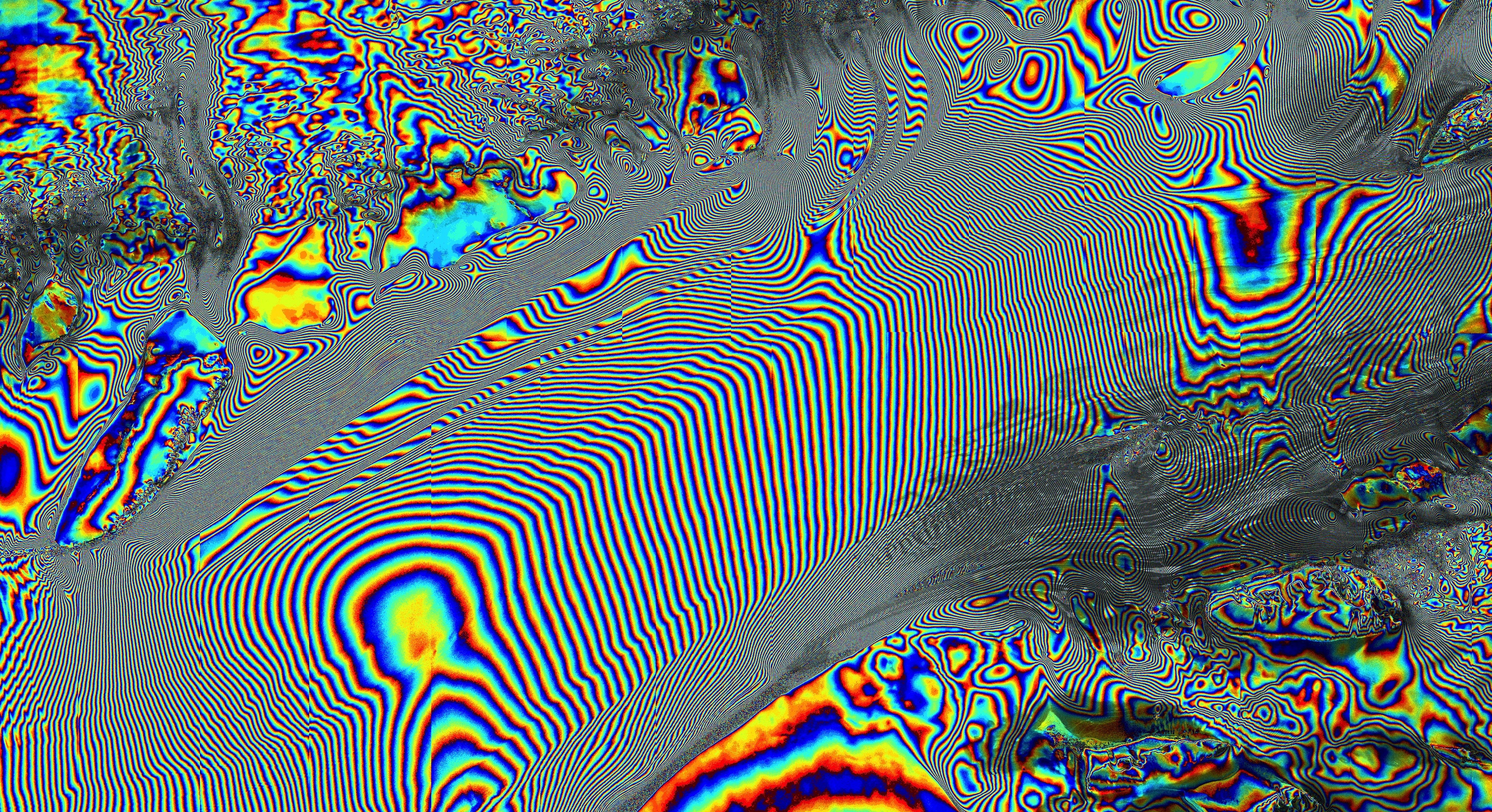Synthetic aperture radar interferometry
Within our radar group, we develop methodologies and algorithms to estimate motion of the earth or objects on earth, and the understanding of related driving mechanisms, using Synthetic Aperture Radar Interferometry (InSAR). In radar imagery, the distance between de observed object and the radar is (ambiguously) encoded in the phase of the complex-valued data. By interferometrically combining multiple SAR images we are sensitive to relative range differences with sensitivities in the order of a fraction of the radar wavelength. In our work, we are mostly interested in linking these phase (or range) differences to relative motions, i.e. deformations, of the surface or buildings or infrastructure.

Sentinel-1 interferogram of an Antarctic glacier. The fringes (color cycles) can be interpreted as relative deformations: a full color cycle indicates a relative surface deformation of about 2.5 cm.
Current research lines include:
- The development of methodologies to precisely locate the so-called Persistent Scatterers (points in the SAR image that remain stable over time), and to find their association to actual physical features/objects.
- Combination of InSAR data-sets with other geodetic measurements.
- Application of InSAR to infrastructure monitoring, with a current emphasis on line-structures such as rail-roads or dikes.
- Retrieval of vertically integrated atmospheric water vapor in order to improve numerical weather predictions.
- Extraction of deformation signals over peat.